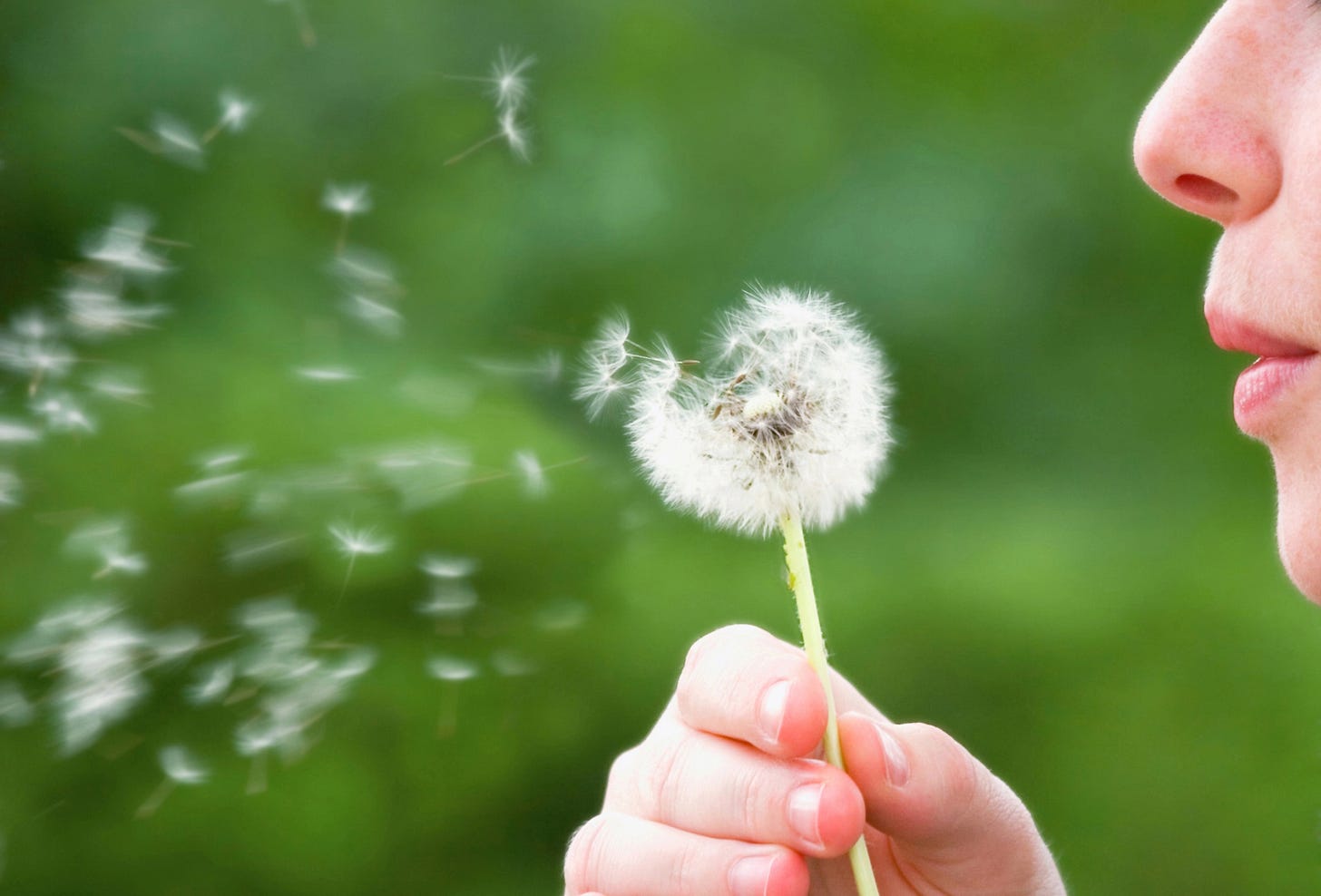Sniffles, Sneezes, and Stress, Oh My
Two Surprising Ways to Soothe Allergy Symptoms Without Meds
Spring is here, and with it comes the annual bait-and-switch:
☀️ Sunshine and warmer days? Yes, please.
🌼 Budding trees and blooming flowers? Gorgeous.
🤧 A nose that feels like it’s fighting for its life? Hard pass.
If your idea of seasonal renewal looks more like nasal warfare and red-rimmed eyes, you’re not alone.
While everyone else is out posting wildflower selfies and “fresh air” quotes, you might be stuck wondering why the outdoors feels like a personal attack.
And to make matters worse?
Breathwork suddenly feels… not so simple when you can’t breathe through your nose.
Let’s fix that.
When Spring Doesn’t Smell So Sweet…
Here’s what’s really going on, with your allergies, all wrapped up in some sort of floating seed packet:
Pollen and mold levels spike in spring, which irritates your nasal passages, sinuses, throat, and even lungs.
Your immune system goes into high alert, releasing histamines — which trigger all the fun stuff: sneezing, congestion, pressure headaches, fatigue.
The inflammation isn’t just physical. Histamines also influence mood and can create an edgy, wired feeling (yes, allergies can actually make you feel anxious).
It’s a lot… kind of like a cold which has no quick end in sight.
But here’s the good news: you can use your breath — even a limited, stuffy, allergy-season version of it — to soothe your system and feel better.
How to Breathe When You’re More Stuffed Than All Your Couch Cushions Combined
💨 If You’re Completely Clogged: Mouth Breathing
In everyday life, we want to avoid breathing through our mouths. But by all means, if your sinuses are staging a revolt behind your face, do what you have to do. Mouth breathing is fine when you have no alternative, as long as it’s intentional and controlled.
The key is to keep it as light and slow as you can. Fast, heavy breathing will dry out your mouth and throat, and you’ll be taking in much more air than you need.
So – inhale and exhale gently through the mouth. Keep the breaths smooth and connected without pausing.
Try it for a few minutes at a time. It might not unstuff you, but don’t be surprised if you feel a little better anyway. By focusing on the technique and slowing down, you’ll lower your heart rate and reduce the background tension that builds up when your body’s working hard to breathe.
🤧 If You’ve Got a Little Nasal Air Flow: Humming Breath (a.k.a. Bhramari)
This is a powerful way to soothe your sinuses and your nervous system.
Inhale through the nose (if possible)
On the exhale, hum like a bee — lips closed, soft vibration in the face
Focus on the buzzing sensation around the cheeks and eyes
Want to amplify the vibration? Experiment with gently blocking your tragi - pressing the cartilage nubs in front of your ear canal. Skip it if it’s uncomfortable though, or if you have an ear infection.
Try it for a few minutes or a few rounds, and work your way up if you want. And if you dig this technique, think about adding it to your routine, because it’s really good for your body.
The vibration from humming helps open sinus passages, reduce pressure, and boost nitric oxide production — in one study, fifteen times higher than regular nasal breathing. Plus, the sound and sensation stimulate the vagus nerve, which relaxes you.
Nature’s Allergy Meds
Breathwork won’t cure your allergies (if only), but it can absolutely help your body cope — by calming inflammation, slowing your stress response, and giving your system a chance to recalibrate.
So if your tissues are already on standby and the air purifier is working overtime, give these super-simple techniques a try.
Because your breath is still here. Always. Even when spring is trying to spring hell on your .
Last Gasp
Want to see a demo of Humming Breath? Check out my free 5 Breaths in 5 Minutes kit and get 4 other quick-shift breathing techniques too.
“If allergies were a superpower, I’d be unstoppable.” ~ Anon.



